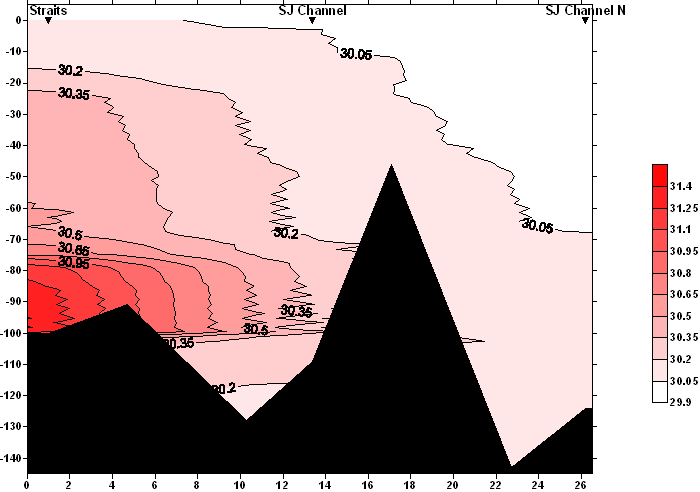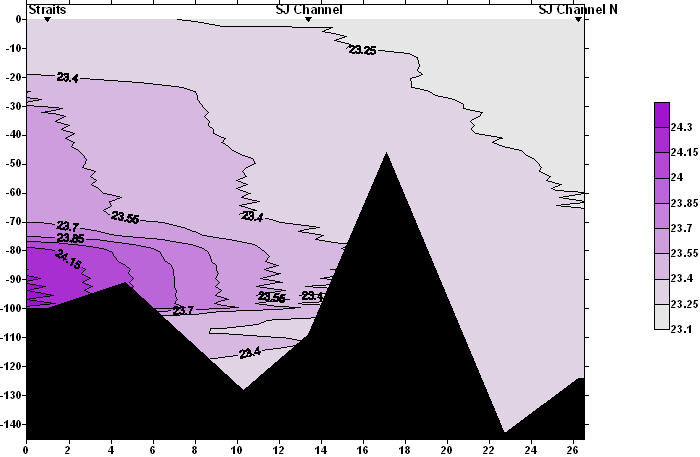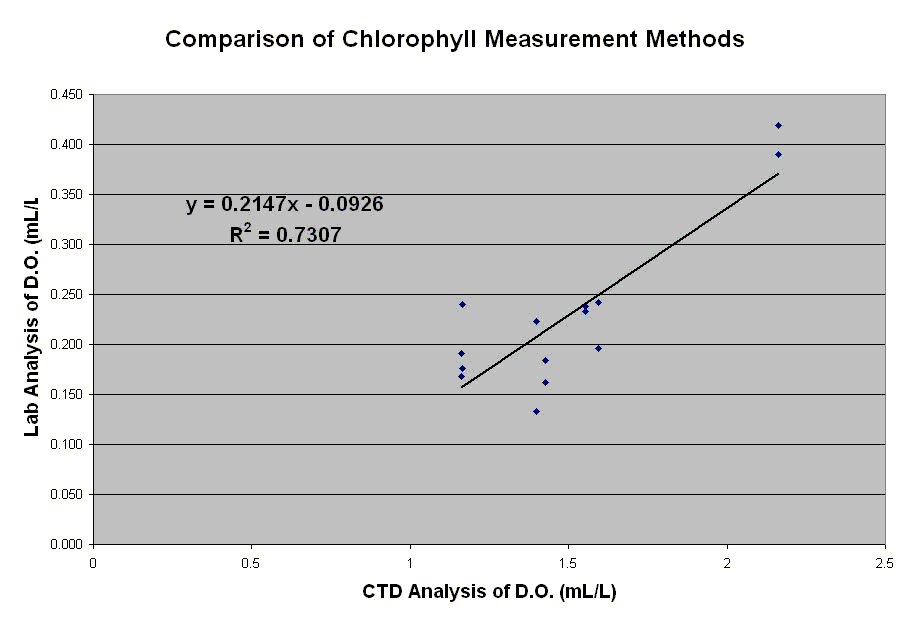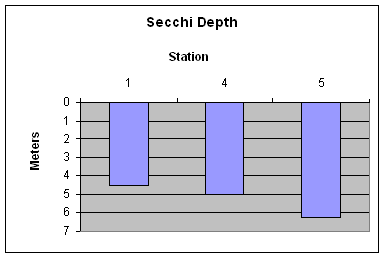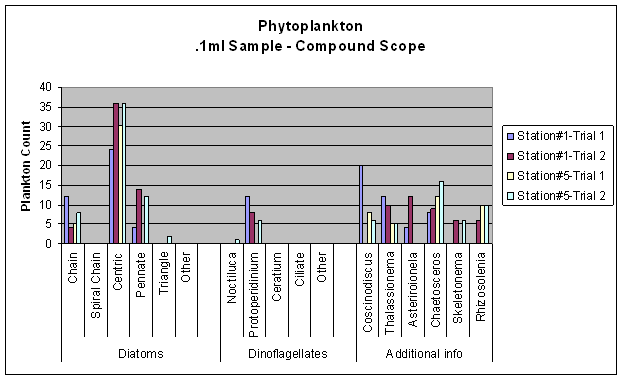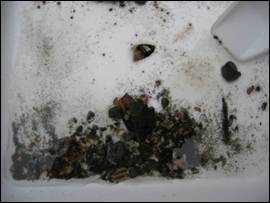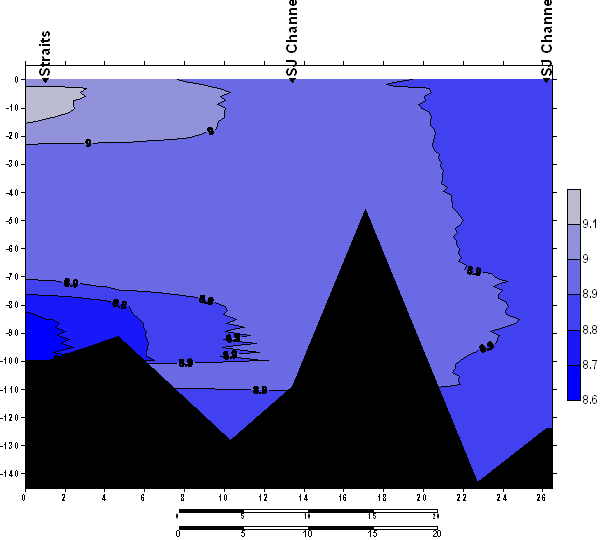
Figure 1.
The water temperature was found to be greatest at the surface of the Strait of Juan de Fuca. The Strait of Juan de Fuca had a thermocline and was stratified. As the station locations moved north, up the San Juan Channel, the seawater became increasingly cooler. The stations within the San Juan Channel did not display temperature related stratification. This was believed to be due to the presence of heavy mixing influenced by strong currents.
